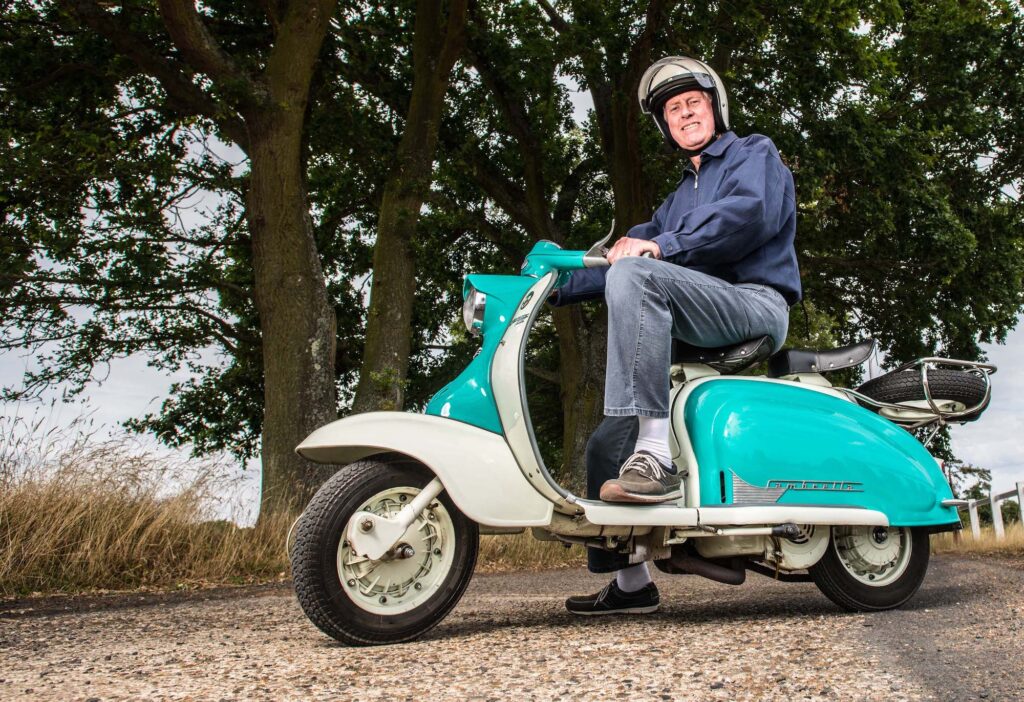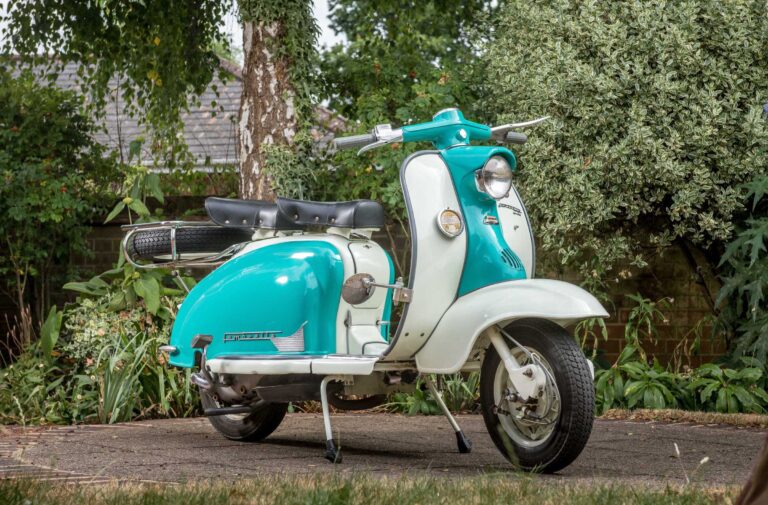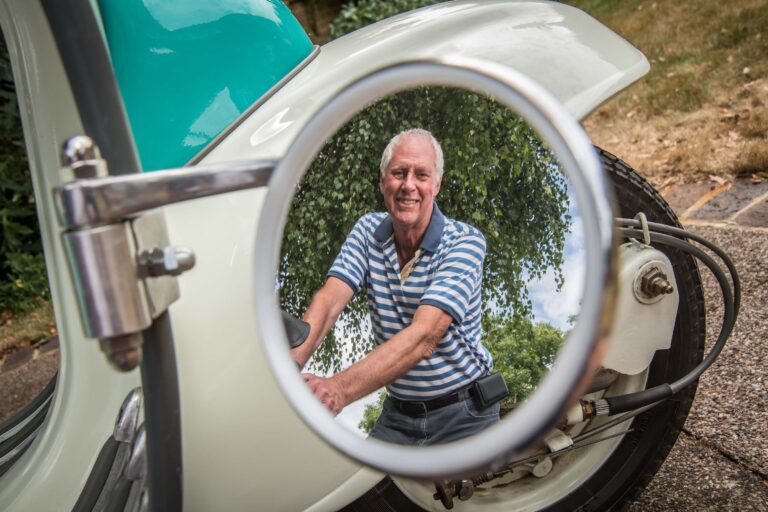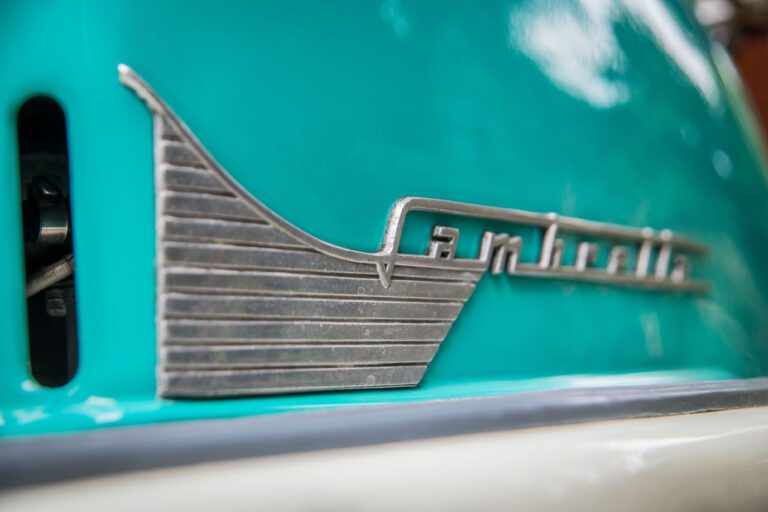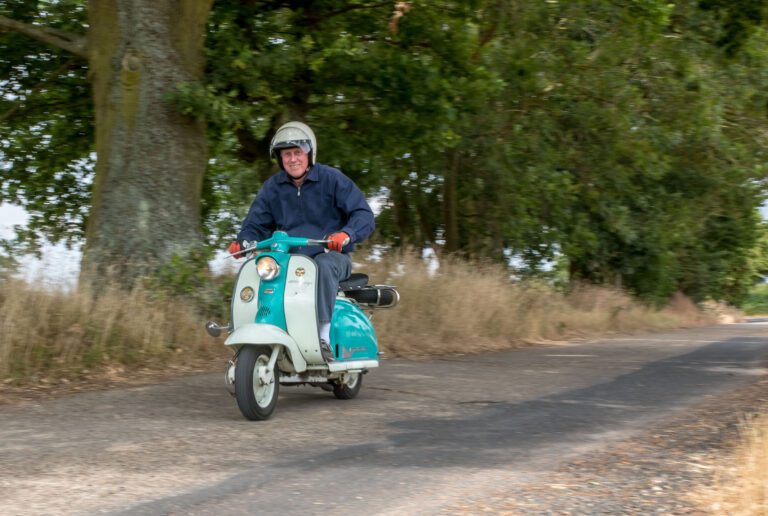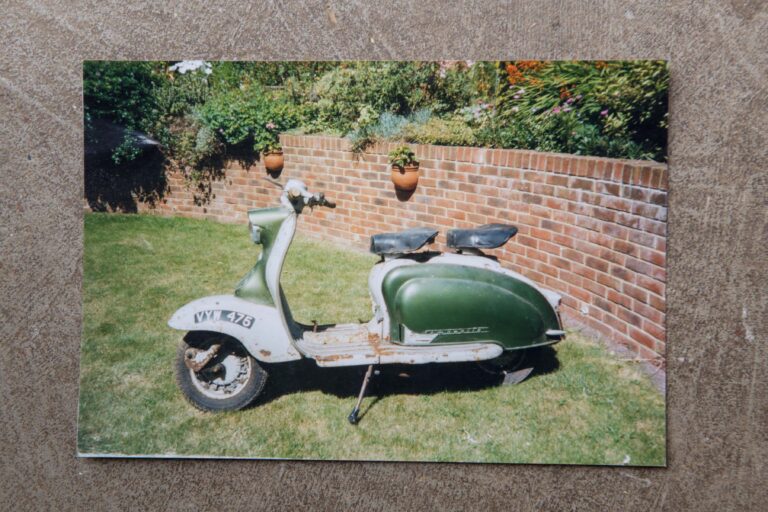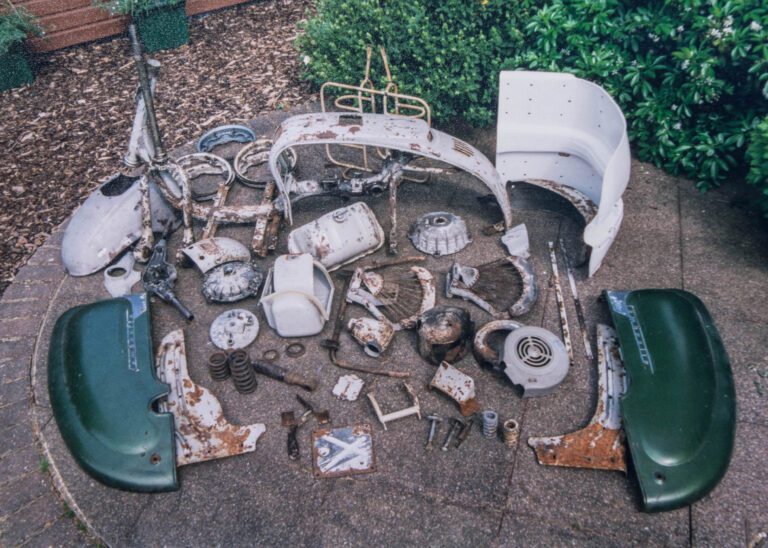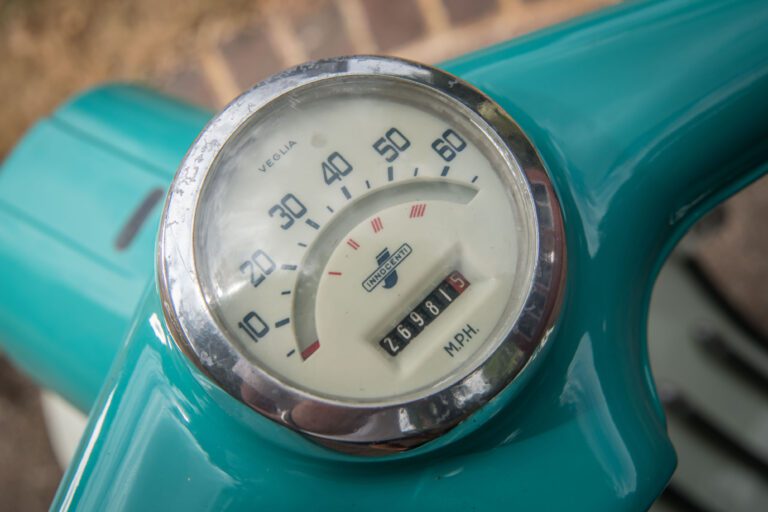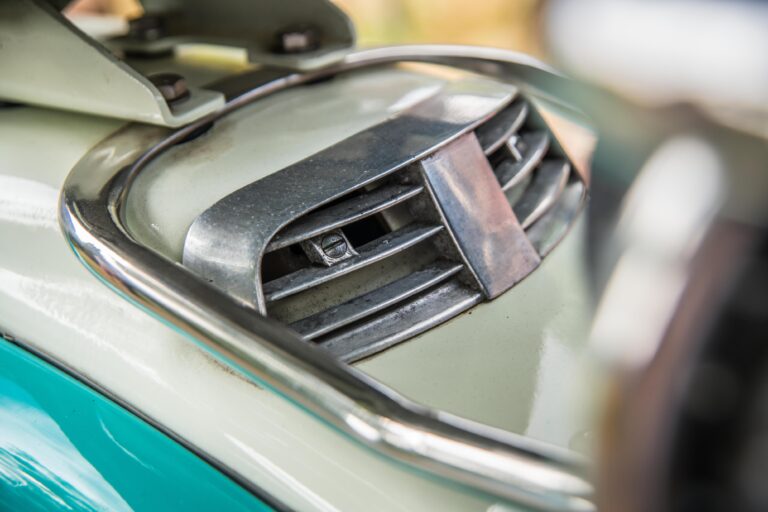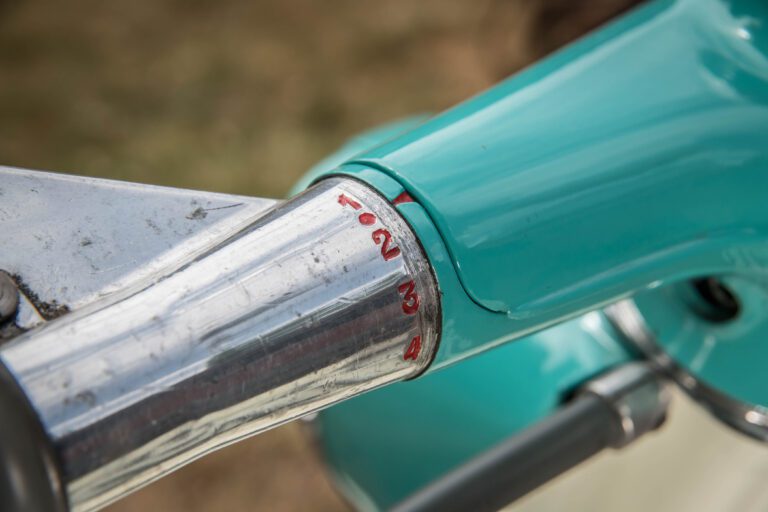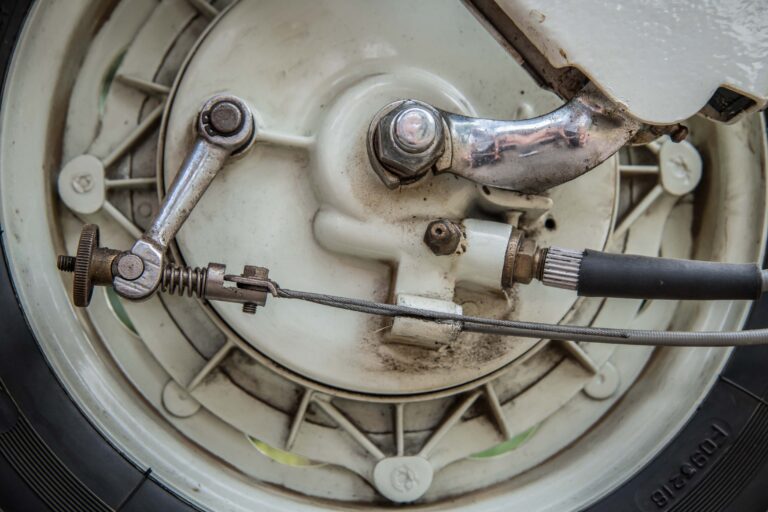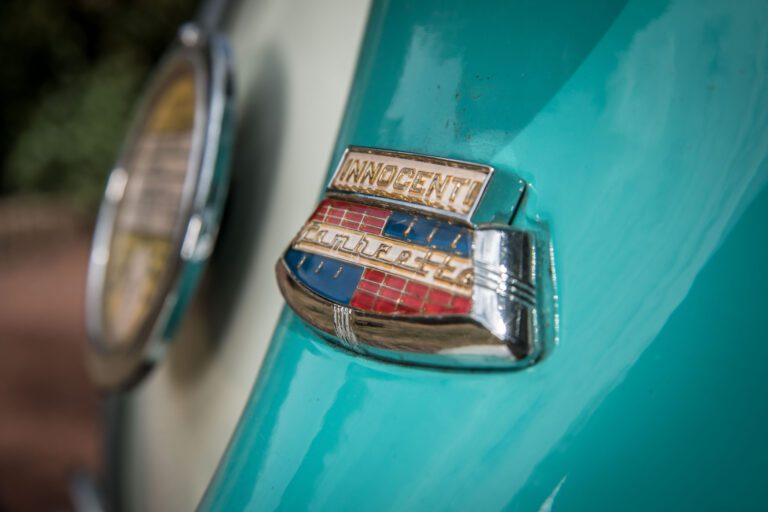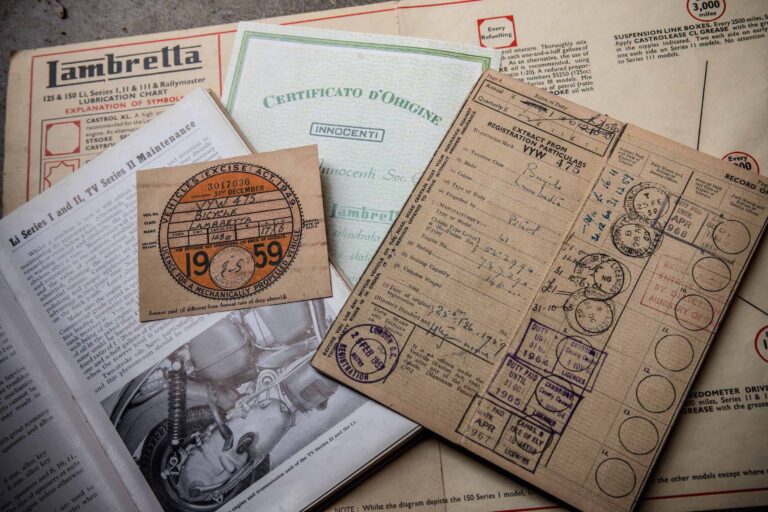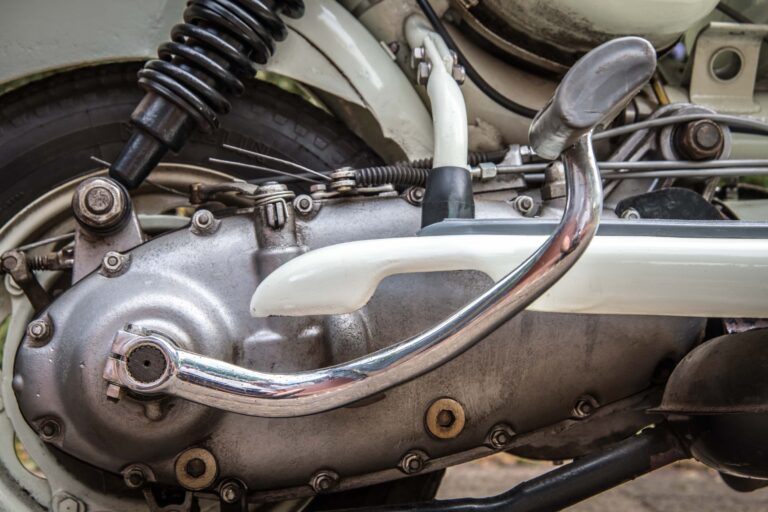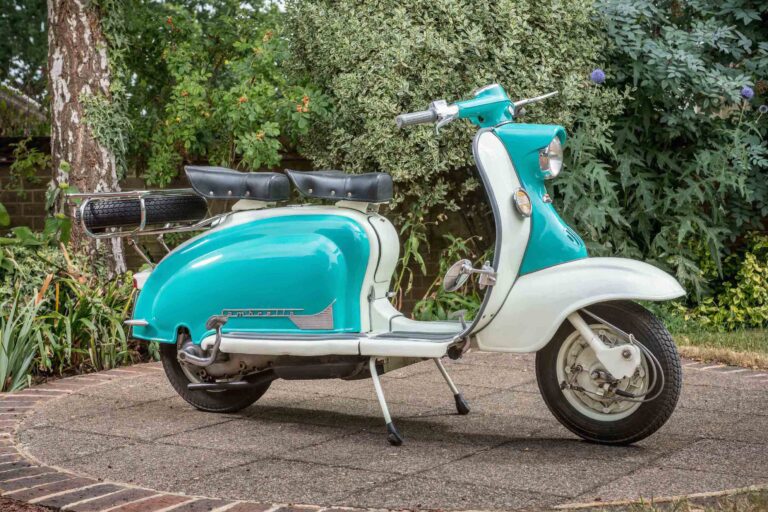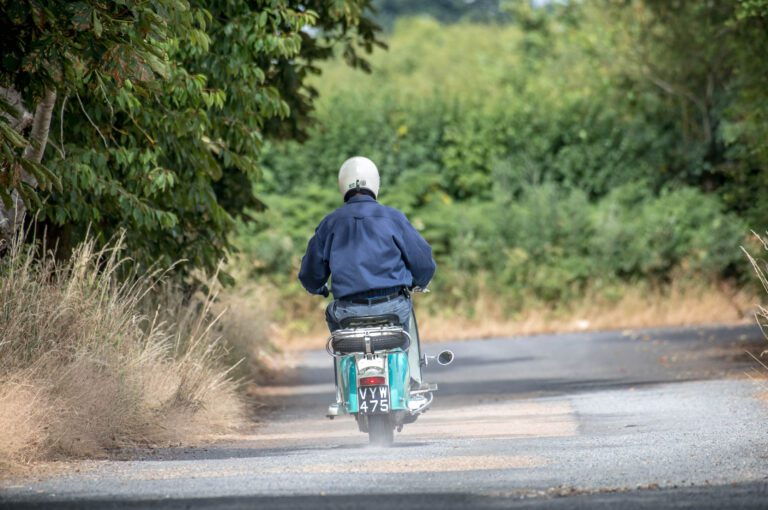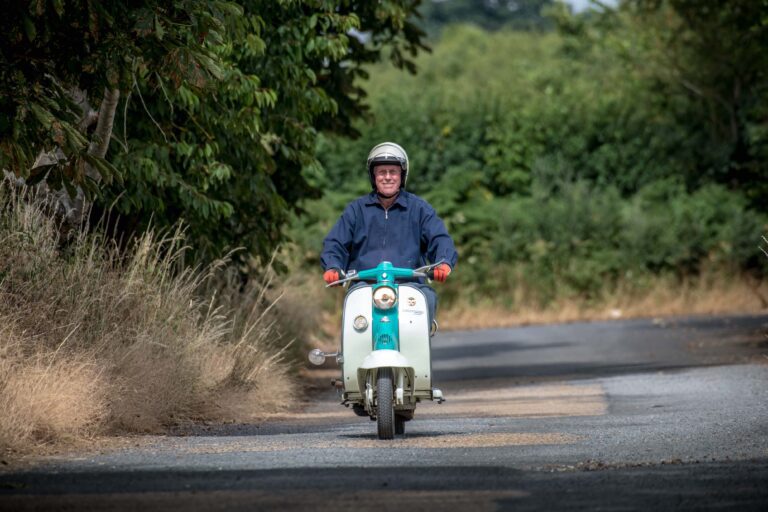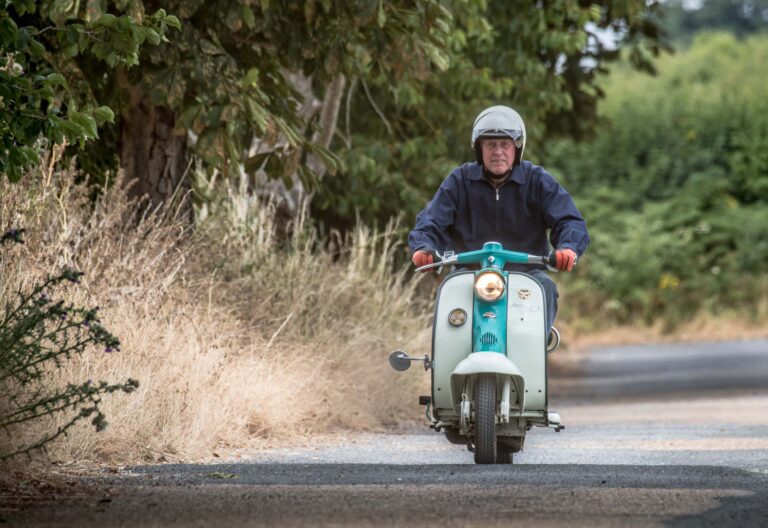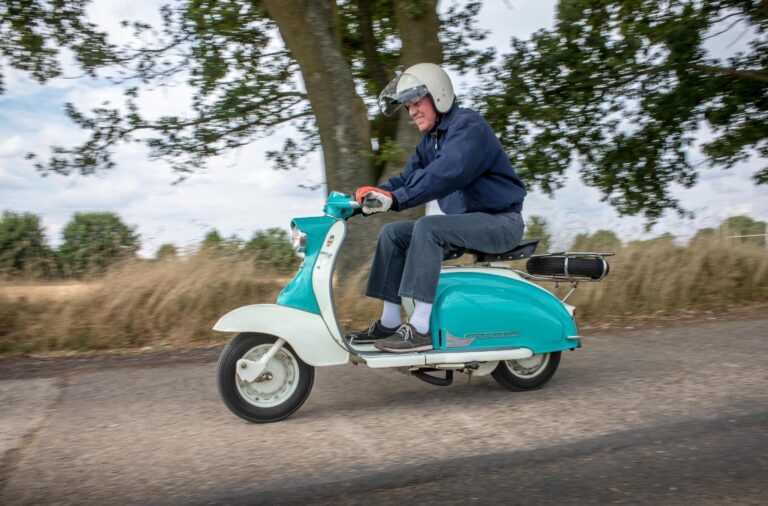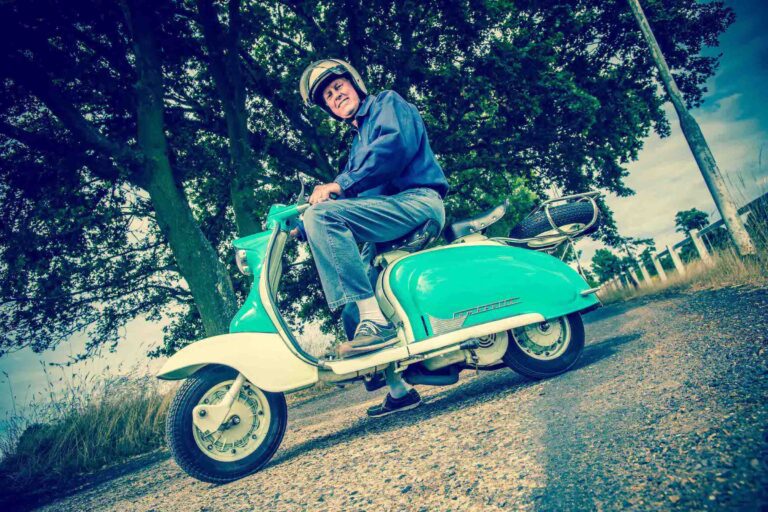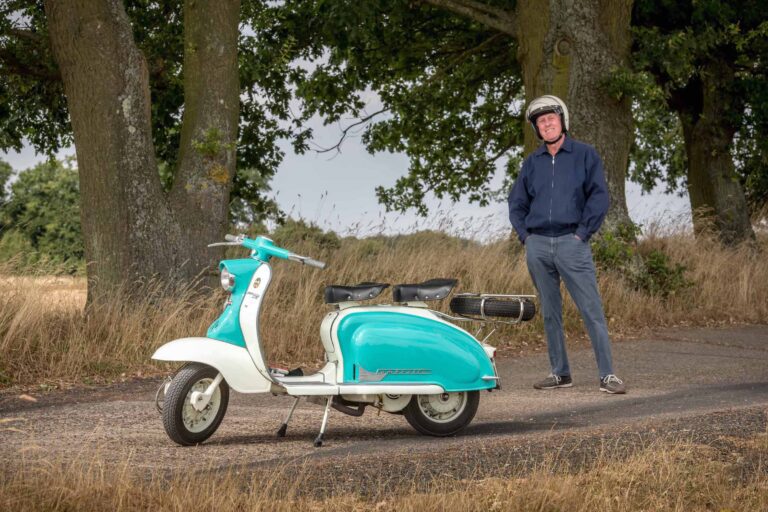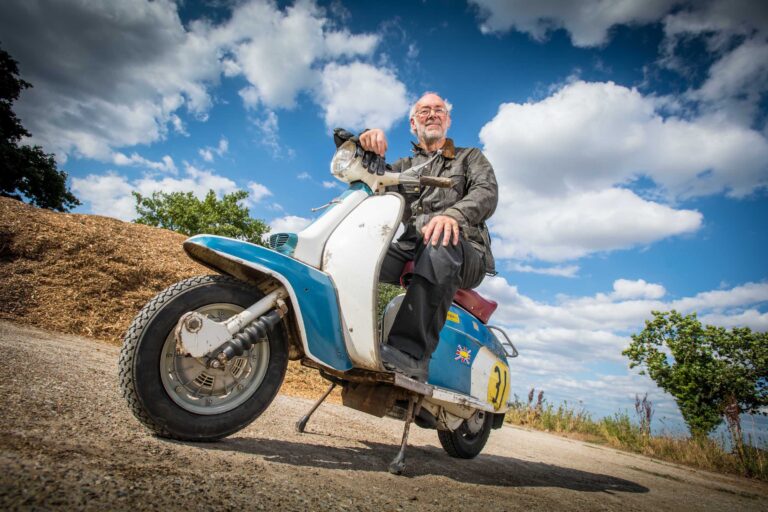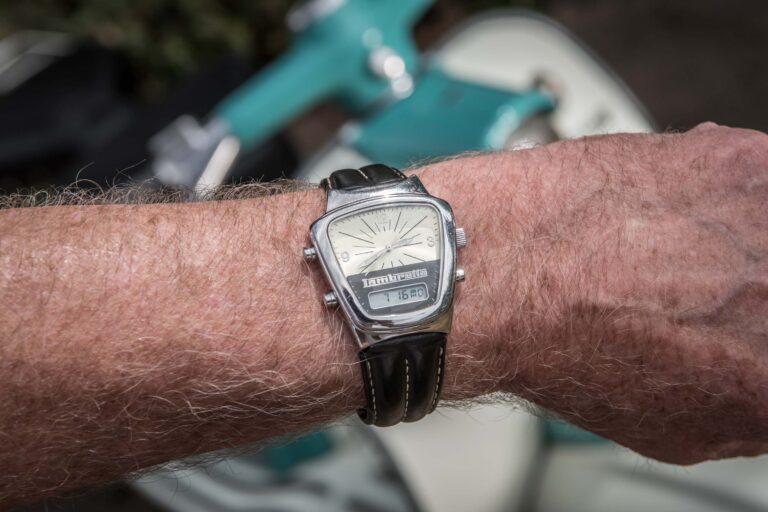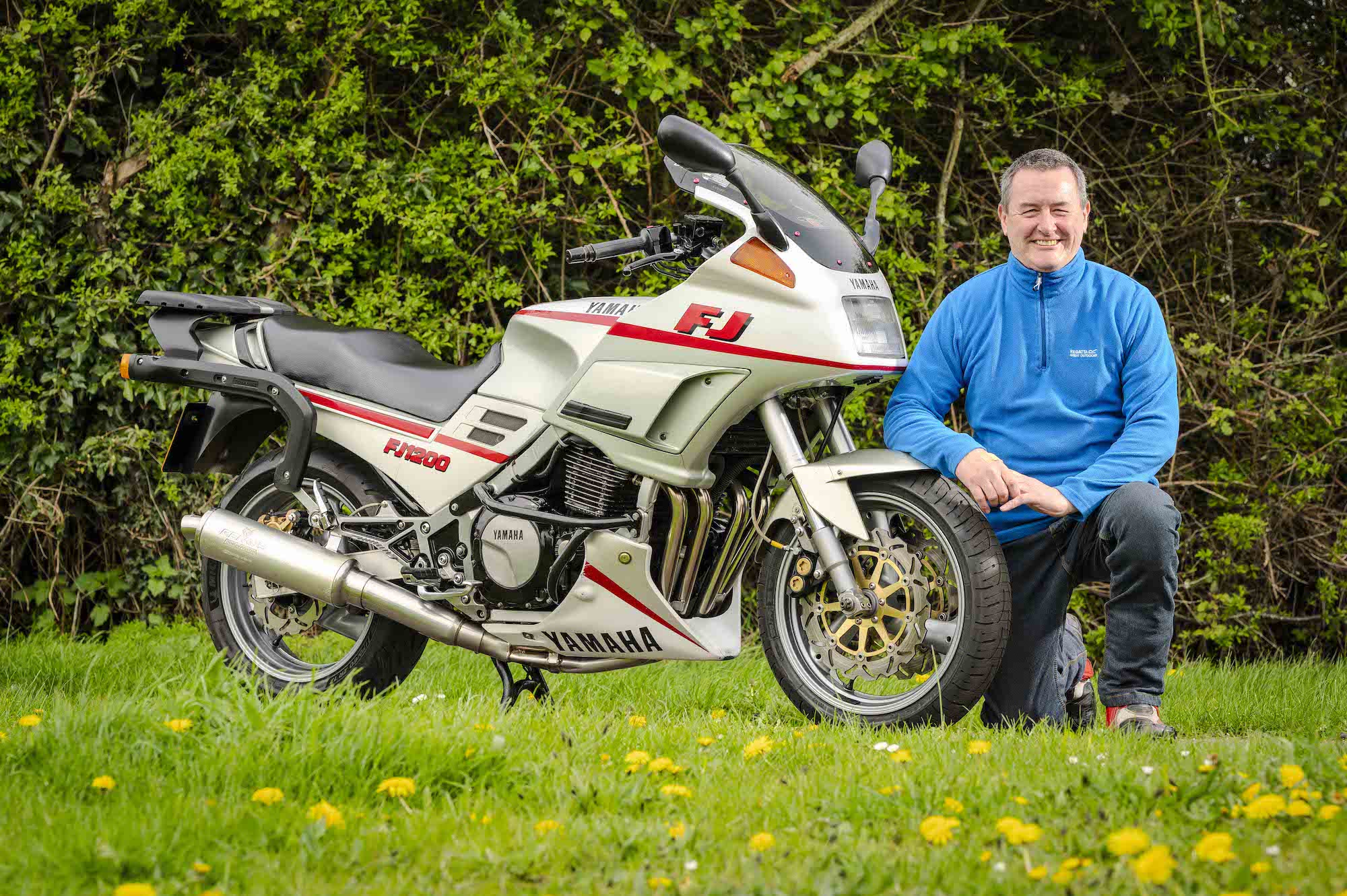Chris Phillips was 18 years old when he bought a tatty Lambretta Li150 in 1965 to get him to work and back.
The scooter had, according to Chris, “been through the mill”, just seven years old but already used and abused by several previous owners.
“It had about four previous owners in south London, and there be dragons!” he says. “None of them had looked after it properly.
“The motor was running, and I got it home, but only just. I had to tie the stand up because the spring had given up.”
Chris set to work restoring the Li series 1 Lambretta and, more than 50 years and an entire adult lifetime later, on sunny days he still takes to the roads around his Reading home on the scooter.
From LD150 to Li150
“I will carry on riding it until I’m incapable through age or whatever,” he says. “It keeps me quiet. It’s something to keep me amused and occupied, and I’d be very sad if it disappeared.”
The Li wasn’t the first Lambretta in Chris’s life, his parents buying him an LD150 for the three-mile trip to school in Cambridge.
“There weren’t many of us turning up on motor scooters in those days, so it was quite fun and saved me cycling to school every day,” says Chris, now 71 and a keen amateur geologist.
“I used to have a screen on it, which you never see now. I’ve still got the screen, which would still fit on the Li, but I’m not going to use it because it would spoil the handlebars.”
The LD was bought from a “family friend who didn’t know much about them, and afterwards I discovered the torsion bar suspension had seized up”.
“There was no suspension other than the rubber tyre!” says Chris. “I rode it for six months like that.
“It was like riding on a feather bed”
“It seemed OK because I had no comparison, I just thought that’s what it did. But then I took the panel off and watched the shock absorber not moving very much. There was no spring, just a rigid torsion bar, and when I freed it up it was like riding on a feather bed.”
After leaving school in 1964, Chris joined Pye Unicam, which made scientific instruments in Cambridge, as a draftsman.
“A chap I got to know in the purchasing department had got an old Lambretta and he said ‘do you want to buy it?’” says Chris.
“I looked at it – it had a broken stand and was painted black with some bits of green paint showing through.
“I agreed on a fiver, just over a week’s wages for me back then. It’s now worth about £4,000, which is crazy money.”
Chris immediately set about smartening the scooter up, thanks to a healthy dose of paint stripper.
“I discovered Nitromors, lovely stuff, and scraped the whole thing back to bare metal,” he says.
“The aerosol can had only just come out then, and I undercoated it and top-coated it back to its original colour scheme – turquoise green and Austin Morris grey – and it was back to quite a nice, shiny bike.
“I also had the engine rebored because the bore was scored, which slightly increased capacity but not so you would notice, probably by about 1cc.
“Hairy moment” on the Lambretta
“I did quite a few miles on it backwards and forwards to work, the only hairy moment involving a milk float, which decided to turn right in front of me without looking behind him.
“I crashed off the back and bounced along the road, grazing both elbows and both knees. I managed to get round the corner to Addenbrooke’s Hospital and luckily I had not broken anything, except the cast alloy handlebars, which made riding it back home a bit hairy.
“I didn’t do any long distances because I was not convinced it would make it!”
Although it was the mid-’60s and the high-point of mod culture, Chris was never into the scene – riding a Lambretta didn’t automatically make you a mod.
“I would say I flew in loose formation with mods,” he says. “I didn’t do the whole parka thing. I wasn’t into mods and rockers, it seemed a bit daft to me.
“Scooters actually weren’t as prolific in Cambridge as in other places – everybody was on a bicycle.”
Early “frame-breather” Li150
The Li150 (and its smaller 125cc-engined brother) was launched in April 1958, which makes Chris’s an early “frame-breather” model.
“The air intake is behind the rear seat and air is drawn in through the frame and into the air filter,” says Chris, a design which had unfortunate unintended consequences.
“They stopped doing it that way because they found that the voluminous skirts worn in those days by young ladies riding pillion were being sucked into the air intake and blocking it, so the bike stopped.”
For later models an air scoop between the two single seats fed air down between the fuel tank and tool box, though the now filled-in rear grille was retained for cosmetics.
The Li was a huge commercial success for makers Innocenti, with more than 150,000 sold in both engine sizes, and set the future pattern for all Lambrettas.
After completing an HND in electronics while at Pye, Chris bought his first car in 1968 – a three-year-old Triumph Spitfire he kept until about 1981.
No intention of selling the Lambretta
For many, that would signify the end of a life on two wheels, but Chris had no intention of selling the Lambretta.
“I had put all that work into it and was not going to get rid of it just like that,” he says. “I was living at my parents’ home and it sat in the garage neatly behind the car.”
Chris moved to Reading with his future wife, Rita, to take up a job at Racal Electronics, and the scooter stayed behind at his parents’ home in Cambridge.
“The scooter stayed there until my mother moved to a smaller house,” he says. “It followed her there and ended up sitting in her back garden under a cover.
“In 1988 she sadly died and we thought ‘we are going to have to do something with this’.
“The scooter then came down to Reading in the back of a Transit van, but by then it was unrideable – the cover was biodegrading faster than the scooter.”
By 1998, Chris was able to take early retirement from his job as publicity director at Chubb Security, and combined an Open University degree in geology and self employment as a copywriter with a “re-renovation” of the Lambretta.
“This time I took it apart and took all the bits off and presented it to a local sandblaster, who took it all back to bare metal again for me,” he says.
“I had it professionally repainted. The chap did a really nice job on it, repairing some of the dents on the front mud guard that they always acquired. I then reassembled it over the next couple of years using stainless steel bolts as opposed to the rusty mild steel ones. It was back on the road sometime in 2000 or 2001.”
The inadequate electrical system was upgraded to 12 volts, and a brake light was fitted for the first time.
Scooter has its own Casa Lambretta in the garden
“It now has its own little Casa Lambretta next to the workshop down the bottom of the garden,” says Chris, who still enjoys riding the scooter when the sun shines.
“It doesn’t get wet! It comes out primarily to go the Woodcote Show, a steam rally held every July just north of Reading.
“There is always a display of different classic bikes made before 1972. When I take it along it is almost invariably the only scooter in a whole sea of old black motorbikes, and it attracts a lot of attention.
“I take a display board along and some people have never seen an old brown log book.”
As well as the show, Chris will take the 60-year-old Lambretta for a run to a local pub, with wife Rita – who he met the same year he bought the scooter – following behind in the car, just in case.
“In the old days she pillioned on it on a few occasions, but she’s sitting here with me now and saying over her dead body would she do it now,” says Chris.
“It has enough trouble lugging one person along. If we go out any distance she follows in the car to make sure there are no spurious noises there.
“If I decide to take it to our favourite pub, the Bell Inn at Aldworth, at the top of a hill 13 miles away on a nice sunny day, it needs a little bit of a support team. It’s never been called on, but it’s always comforting to have.”
Riding is very different today than it was in the 60s
Riding today is very different to back in the 1960s, thanks largely to the ubiquitous potholes.
“Potholes are one of the biggest problems, because they are often about the same size and depth as a scooter tyre and if you hit one of those you are on the floor,” he says. “You spend most of your time looking out for, and trying to avoid, the damn things.”
And when he’s not scouring the road ahead, Chris is taking the “appreciative nods” from passing bikers.
If anyone deserves it, Chris does, after more than 50 years of ownership and two restorations that have left an indelible mark on his life.
“I don’t know why I’m attached to it, other than that I’ve put a lot of work into it,” he says. “There’s quite a lot of me in the bike.
“It’s a fun bit of kit – I like simple mechanical things more than this modern computer-operated stuff.”
That the 1958 Lambretta Li150 also happens to be a design icon is merely a happy coincidence.
If you enjoyed Chris’s story, why not take a look at Pete Hockley’s “A Way of Life: half a century with a Lambretta Li150 Special.“
